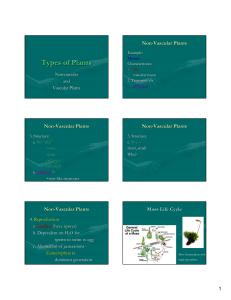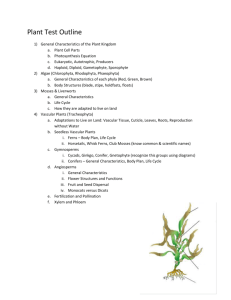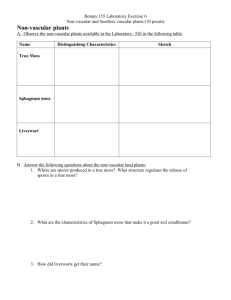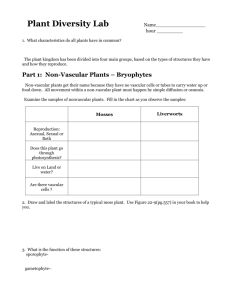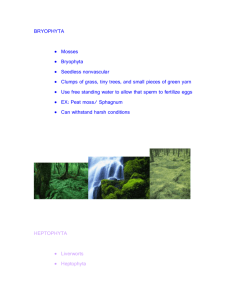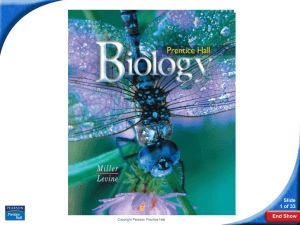Types of Plants Nonvascular and Vascular Plants
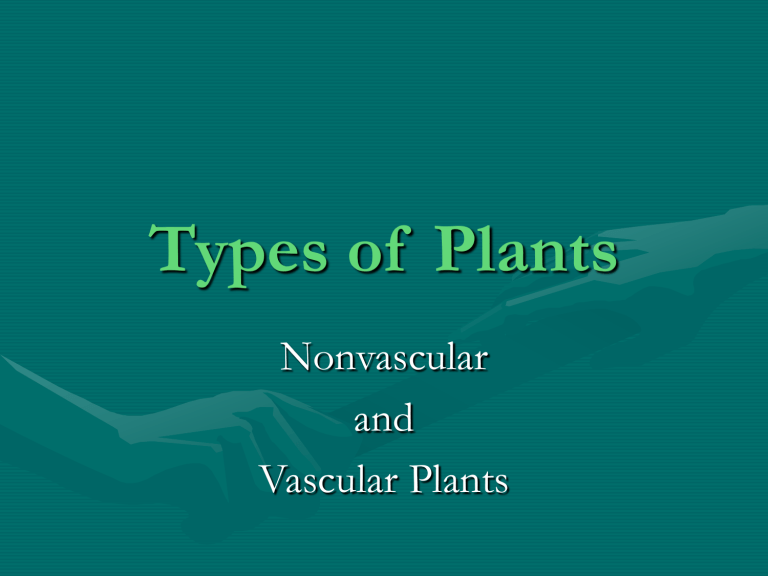
Types of Plants
Nonvascular and
Vascular Plants
Non-Vascular Plants
Example: Mosses
Characteristics:
1.
No vascular tissue
(system of tubes to transport water & nutrients)
2. Transport via diffusion
Non-Vascular Plants
3. Structure: a. No “true” roots, stems or leaves or cuticle b. Rhizoids =
• root-like structures
• Absorb H
2
O & nutrients c. Size – short, small Why?
Non-Vascular Plants
4. Reproduction a . Seedless (have spores) b. Dependent on H
2
O for sperm to swim to egg c. Alternation of generations -
Gametophyte is dominant generation
Moss Life Cycle
Moss Gametophyte with single sporophyte
Non-Vascular Plants
5. Habitat -wetlands
6. Ecological Roles :
• Habitat for animals
• Fuel (peat)
• Soil improvement (peat)
Vascular Plants
1. Seedless Vascular Plants
Examples: Ferns
2. Seed Plants
Examples: trees, flowering plants
What is Vascular Tissue?
Definition: system of tubes for transport
Location: in “true” roots, stems, leaves
Examples:
1.
Xylem – move nutrients & H
2
O
UP from roots
2.
Phloem – transports the products of photosynthesis in all directions
1. Seedless Vascular plants : Ferns a.
Structure
• True roots, stems & leaves
(vascular system)
• Transport via vascular tissue
• Frond = blade (leaf) of fern
• Cuticle on upper surface of frond
• Have Stomata
Fern Structure
• Size : can be taller than mosses
Why?
1. Seedless Vascular plants : Ferns c. Reproduction i.
Seedless (use spores) ii. Spores in sporangia (spore cases) iii.
Sporangia clustered in Sori iv. Dependent on H
2
O for sperm to swim to egg
Fern Reproduction v. Alternation of generations -
Sporophyte is dominant generation
Fern Life Cycle
Ferns d. Habitat : moist areas e. Ecological Roles
• Habitat
• Food (Fiddleheads)
• Fertilizer
Vascular Plants
2. Seed Plants
1. Seeds in Cones
2. Seeds in Flowers =
Flowering Plants
